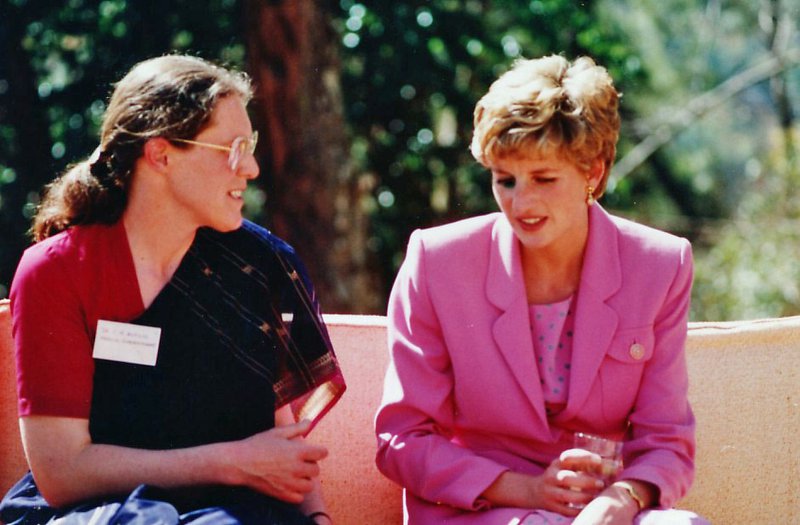‘We long for the 'Diana effect' to ripple into the world’s remotest and most shunned communities today’
The Leprosy Mission is delighted to receive a donation of £202,857 from the BBC in response to investigations following the Martin Bashir Panorama interview with Princess Diana in 1995.
Chief Executive Peter Waddup said it would continue the Princess's legacy of bringing the world’s most marginalised people out of the shadows.
He said: "Princess Diana is someone held in the highest regard by people affected by leprosy today. She was the world's most photographed woman and made headlines by holding the hands of leprosy patients. This had an unquantifiable impact in quashing some of the terrible and unfounded stigma surrounding leprosy.
"Leprosy is a leading causing of preventable disability. It is a disease that thrives where people live in poverty. It should not exist today as there is a cure, but people are afraid to come forward for treatment. There are so many myths surrounding the disease that they fear being cast out by their friends, family and communities.
"So, you can imagine the huge strides Princess Diana made by being photographed sitting with and holding the hands of leprosy patients. She showed the world that leprosy was not a disease to be feared. We still long for the 'Diana effect' to ripple into the world’s remotest and most shunned communities today."
In November 1989 the headline in The Sun newspaper screamed out 'Di to Shake Hands with Leper, Don't Do It Di'.* Princess Diana wasn't afraid of making a splash. She ignored her advisors and was photographed holding the hand of a leprosy patient at Sitanala Leprosy Hospital in Indonesia. This was no ordinary woman, shining a light on this forgotten disease.
Soon after Princess Diana became Patron of The Leprosy Mission. She made visits to Premananda Hospital in Kolkata, India, and Anandaban Hospital in Nepal. When she reduced her patronage of nearly 100 charities to just six in 1996, she chose to continue her support of The Leprosy Mission. She remained Patron until her untimely death almost 25 years ago.
Princess Diana spoke passionately at a global anti-leprosy conference in London in 1996. She said: "It’s always been my concern to touch people with leprosy, trying to show in a simple action that they are not reviled nor are we repulsed."
Dr Ruth Butlin, 70, met Princess Diana in 1993 when she visited The Leprosy Mission’s Anandaban Hospital in Nepal.
Dr Butlin, who is now retired and living near Eastbourne, was Medical Superintendent at the time.

“She was a very active patron at the time and well informed about the impact that leprosy had on people’s lives,” she said.
“I took her on the tour and what was so noticeable is how unafraid she was. Some people would’ve been scared to come into a ward for leprosy patients. Princess Diana showed no fear or revulsion when speaking to the patients. She held their hands, sat on their beds and asked questions.
“The patients valued her visit so much. They couldn’t believe that a foreign princess came to see them.
“She came across as being genuinely very interested. She knew that she could help so many charities because whatever she did attracted attention.
“She modelled how to treat leprosy patients in a kind and accepting way.
“She brought them out of the shadows and into the limelight with her, demonstrating kindness and acceptance. I was encouraged by her visit, as were all the staff.”
*The Leprosy Mission advocates for the team ‘people affected by leprosy’ to be used as opposed to ‘leper’. The term ‘leper’ is derogatory, outdated and is associated with someone who has been rejected, ostracised or regarded as an outcast.